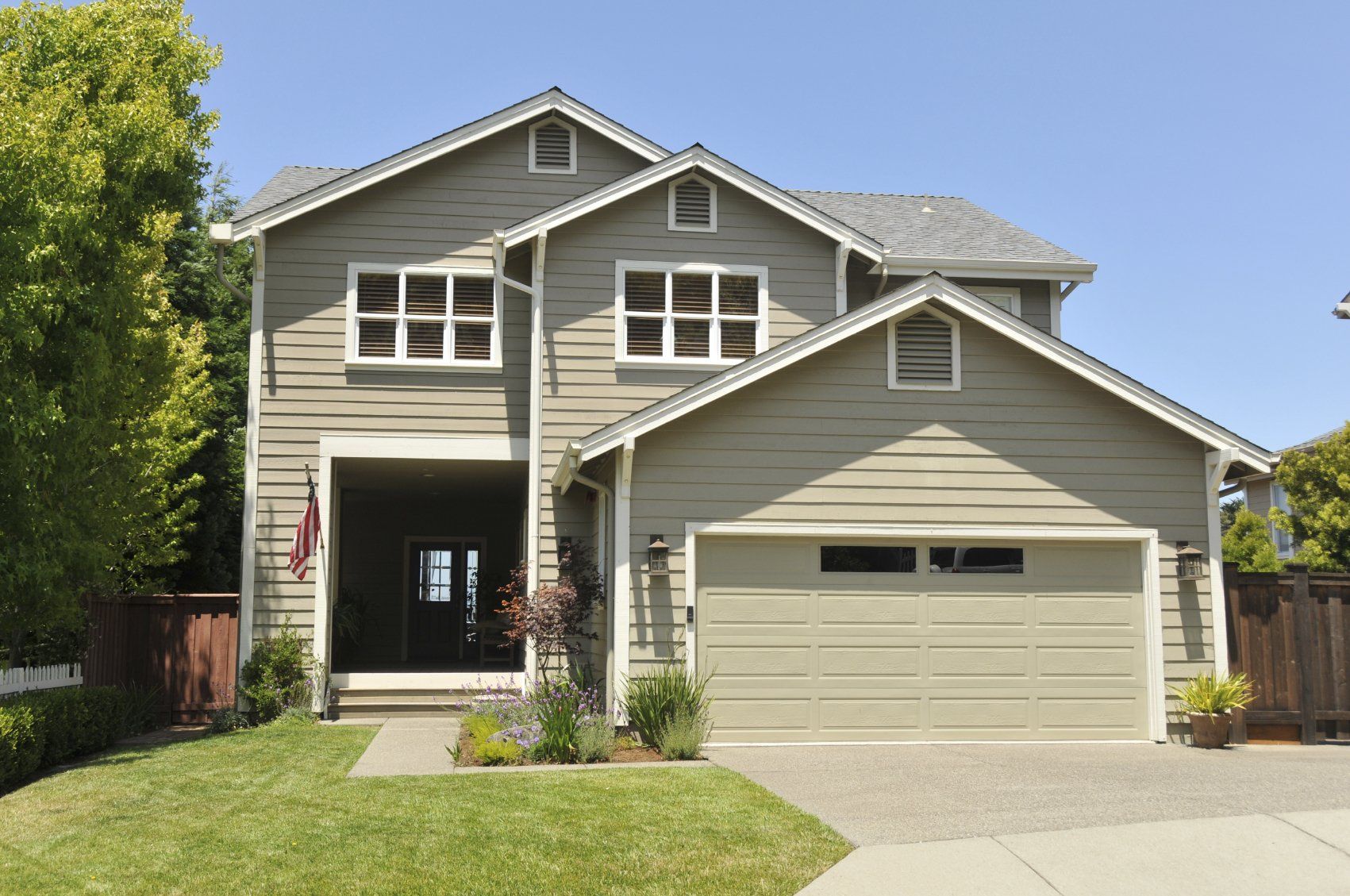How to Get Rid of PMI on Your Investment Property
When you’re applying for a mortgage, the principal and interest aren’t the only things you need to consider. There are additional upfront closing costs, and there are also ongoing monthly expenses like property taxes, a homeowners insurance premium, and potentially PMI to consider, too.
Out of all these expenses, homeowners have the most control over their PMI, as it’s determined by factors like the type of mortgage you’re using and how much of a down payment you’re bringing to closing.
Many homeowners do end up with PMI. But while it can be pricey, the good news is that you can get rid of it eventually once certain conditions are met.
What Is PMI?
Private mortgage insurance—or PMI—is insurance not on the home, but on the mortgage itself. It protects the lender if you stop making payments on your home, and it may be required if you take out a conventional mortgage with a down payment under 20% of the home’s purchase price.
It’s also typically required when refinancing a conventional loan if your total home equity is under 20% of the current value of your home.
What types of loans require PMI?
Conventional loans—including refinancing—require private mortgage insurance if you’re putting less than 20% down when closing on your home.
Other types of loans do not require PMI, but may have their own type of mortgage insurance. If you use a Federal Housing Administration (FHA) loan, for example, you’ll be required to pay mortgage insurance premiums (MIP), which work differently from PMIs.
In many cases, your PMI will show up on a monthly mortgage statement, as it’s processed through escrow.
How Much Does PMI Cost?
PMI costs are determined by the cost of your loan, your down payment, and factors like your credit score. According to Chase Bank, average PMI rates range from 0.22%-2.25%, depending on your credit score. The loan servicer multiplies the cost of your loan by the PMI rate and then divides it by 12 to give you a monthly premium.
So let’s say your property is worth $500,000. You’re coming to the closing table with $50,000, which is 10% down, and your loan will be for $450,000. The loan officer shares a PMI disclosure form and lets you know that your PMI rate will be 0.60% based on your credit score.
In this case, they could use the following calculation:
[450,000 x .60%] / 12 = $225 monthly mortgage insurance premium payment
Your PMI monthly payments will stay the same for the duration of the policy.
When Does PMI Go Away?
Private mortgage insurance is not permanent for the lifetime of the loan, thanks to the Homeowners Protection Act, which allows for PMI removal once the LTV ratio is at a certain point. Before this went into effect, PMI could be required for the lifetime of a loan.
Mortgage lenders automatically end your PMI payments when you’re scheduled to reach a 78% loan-to-value (LTV) ratio, which tells you how much your loan is compared to the value of the property. This will happen if you’re current on all of your mortgage payments, and you’ve made enough in interest payments to own 22% equity in your home.
You can request PMI cancellation once your LTV is 80% or lower. To do this, you can contact the private mortgage insurance company and request termination, but you must be current on your loan.
How to Get Rid of PMI Early
To get rid of PMI, you must have an LTV ratio of 80% or lower on your loan, and in most cases, this means waiting until your interest payments add up to reach that point.
That said, there are a few different ways of eliminating PMI early because there are other ways to establish and build equity in your home. Let’s look at each.
1. Reappraise your home
One way to cancel PMI early is to have your home reappraised if you suspect that the property has appreciated past its original value.
During this process, an appraiser will assess the value of your home. This allows you to leverage any upgrades from remodeling or appreciated value thanks to market conditions in your favor.
If your total home value has increased, it’s possible it’s increased enough that your LTV ratio has reached 80 or under. If so, you can request to cancel PMI with your insurance broker.
Keep in mind that you’ll need to pay for a new appraisal, which can vary significantly in cost.
2. Refinance your loan
It’s common for borrowers to have a conventional loan with less than a 20% down payment (and, thus, PMI) because saving for a home while paying rent can be extremely difficult.
For many, it’s often easier to save more once you’re in the home and have knocked out big expenses like furniture or potential repairs and remodeling. And for investors who start making a profit on the home, it’s much easier to pay down more of the total loan after the fact.
Refinancing your loan essentially creates a new loan, so it eliminates PMI automatically if your new LTV ratio is under 80%. Investors often choose to refinance when interest rates are lower, or they want to essentially make a lump-sum payment that will reduce their month-to-month mortgage payment.
3. Pay down your mortgage
You have a total monthly payment that includes your principal and interest, and it may also include PMI, property tax, and property insurance. Your total amount of principal and interest payments are impacted by amortization.
You can, however, pay down your mortgage early. The most effective way to get rid of PMI fast is to make principal-only payments as often as you can. Some investors throw extra cash into principal balance payments if they don’t have additional costs on their investment property, while others add extra payments at set intervals to get the loan balance down.
Just make sure that when you’re making a payment, you’re using “principal-only” payments; paying down the interest early won’t help improve your loan balance and LTV.
4. Renovate to add value
While it’s always nice when there’s a hot real estate market and your property automatically increases in market value, this can take time and isn’t in your control.
Many investors choose to renovate homes to add value or increase their appeal to potential renters or buyers. If you believe your renovations have added enough value to the home to drop your LTV ratio to 80% or less, get your home appraised.
However, renovations typically do not mean an equal return on your property’s appraised value. You may spend $20,000 on new floors, only to see a $2,000 increased property value (or, depending on the floors you choose and what you replace, may not increase value at all).
Updating major appliances or “big ticket” rooms like a bathroom or a kitchen are your best bet for significantly increased home value outside a significant home expansion.
When Are PMI Payments Good for Investors?
PMI can be expensive, and it may feel frustrating for homeowners to be paying extra money every month that doesn’t contribute to their home equity.
That being said, PMI payments can be good for investors, depending on their particular financial situation and investment strategy.
In some cases, investors may benefit from closing with a small down payment and having an extra monthly payment. Here are some examples.
You don’t have 20% right now
For starters, some investors may spot a great opportunity but literally can’t show up with a 20% down payment. Others may have the funds but choose to hold some back so that they can make repairs or renovations on a property promptly.
In these cases, when a real estate opportunity is a great fit, it often makes sense to just secure the home while paying PMI even if it means a small extra monthly payment.
If this is the case and you can afford the extra monthly payment, it can be a great investment.
You know profit will exceed PMI payments
From a cash flow perspective, sometimes you need to spend money to make money.
Many real estate investors may pinch pennies to acquire initial (or even subsequent) properties, but their cash flow improves dramatically as soon as they can start making a profit.
Say you’re paying $1,000 a month on principal, interest, homeowners insurance premiums, and property tax. Your PMI is $60 a month. You’re able to charge $2,000 a month plus utilities to a renter, giving you a profit (before other costs) of around $940 a month.
It makes sense to pay $60 a month to secure the home when you can and start earning a profit, which can not only be used to pay down your mortgage balance early if you choose but potentially secure an additional investment property.
You want to prioritize cash flow
Any homeowner can tell you that properties can come with significant costs, both expected and unexpected. Putting less money down upfront can leave you more funds to deal with any costs needed to maintain that investment property, whether it’s legal fees during an eviction process or new air conditioning when the old one dies in the dead of summer.
Cash flow is essential for businesses, so a small monthly payment to earn you some financial flexibility can be a huge advantage.
PMI FAQs
Still have questions about private mortgage insurance? We’ve got answers!
How can you avoid PMI?
If you want to avoid PMI costs, you can come to closing with 20% down.
You can also look at other financing options. A VA loan, for example, does not require any kind of mortgage insurance premium or a down payment on the home.
How do I get rid of PMI without refinancing?
PMI is automatically removed from your loan when your loan-to-value ratio reaches 78%.
Once your loan-to-value ratio reaches 80% or lower, you can request your mortgage lender have it removed. This can happen through standard mortgage repayments, additional principal-only mortgage payments, or increases in your property value due to renovations or appreciation (though the latter requires an appraisal).
Can I remove PMI if my home value increases?
If your home value appreciates beyond its original value to the point where your LTV is at 80% or under, you can request PMI cancellation.
Source: Bigger Pockets Blog
Dusty Rhodes Properties is the Best Realtor in Myrtle Beach! We do everything in our power to help you find the home of your dreams. With experience, expertise, and passion, we are the perfect partner for you in Myrtle Beach, South Carolina. We love what we do and it shows. With more than 22 years of experience in the field, we know our industry like the back of our hands. There’s no challenge too big or too small, and we dedicate our utmost energy to every project we take on. We search thousands of the active and new listings from Aynor, Carolina Forest, Conway, Garden City Beach, Longs, Loris, Murrells Inlet, Myrtle Beach, North Myrtle Beach, Pawleys Island, and Surfside Beach real estate listings to find the hottest deals just for you!
Share





